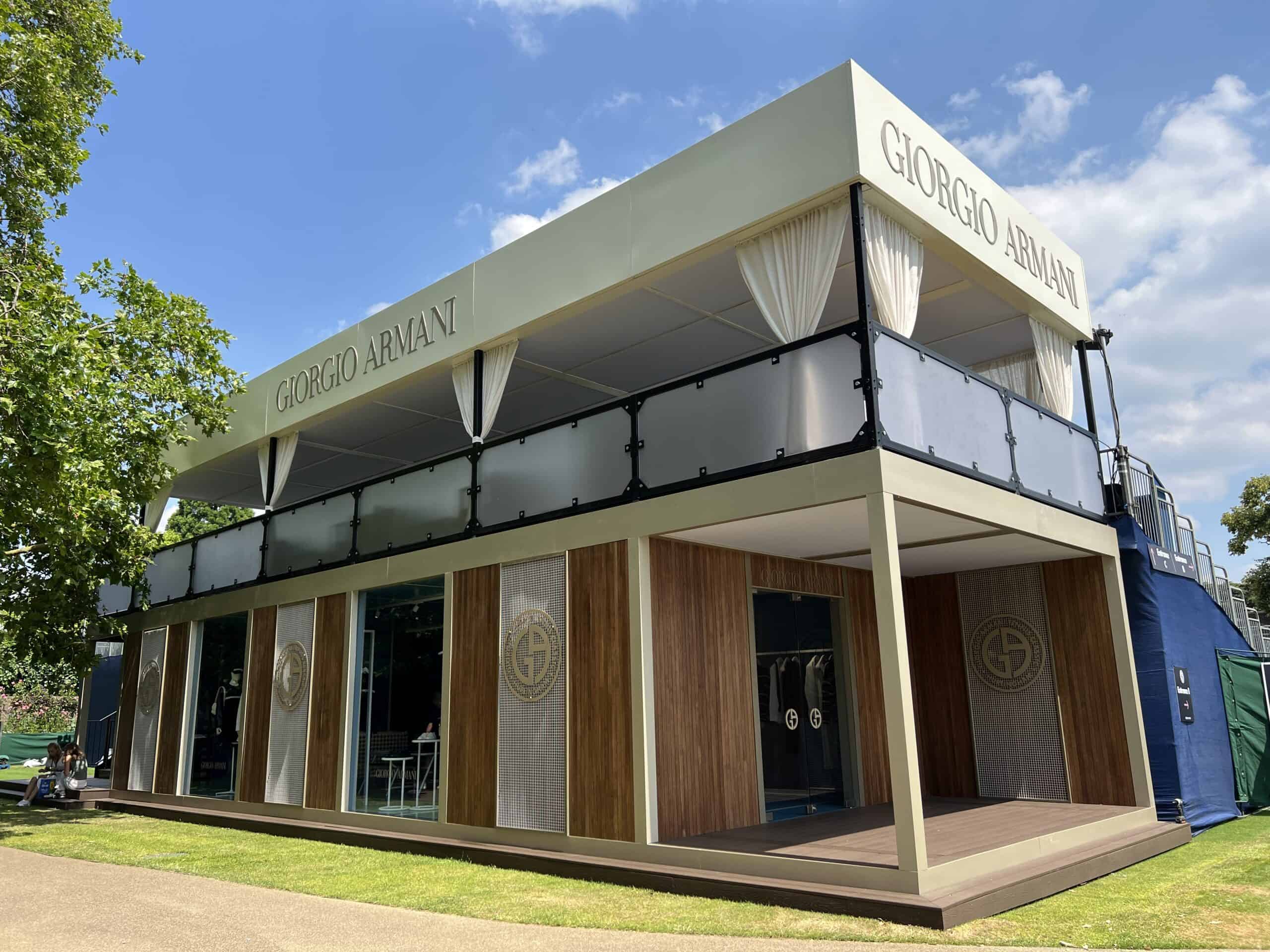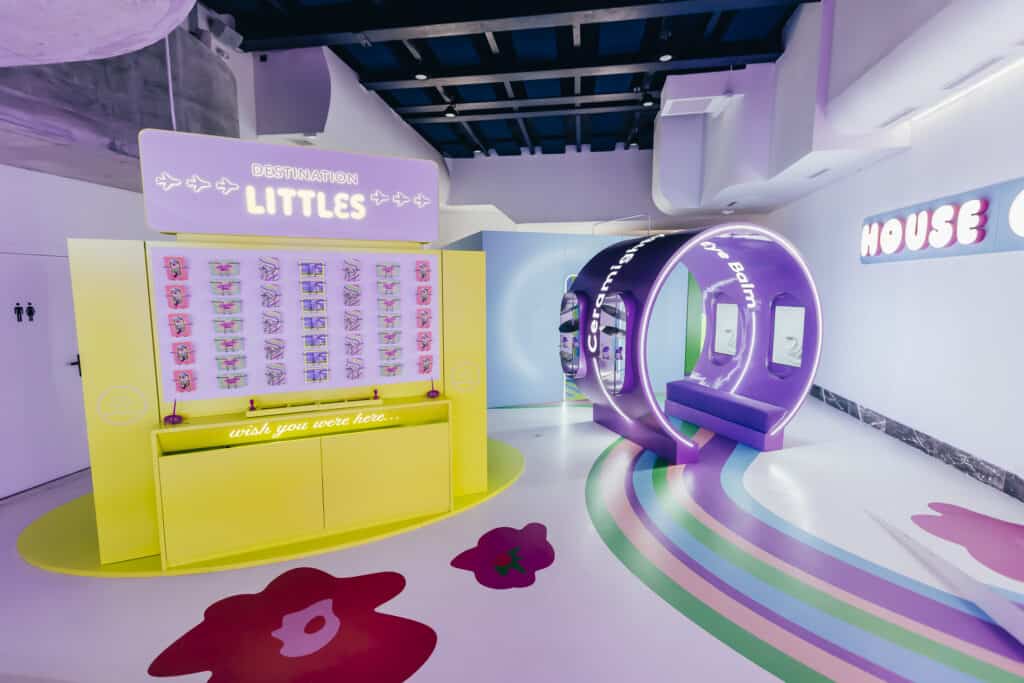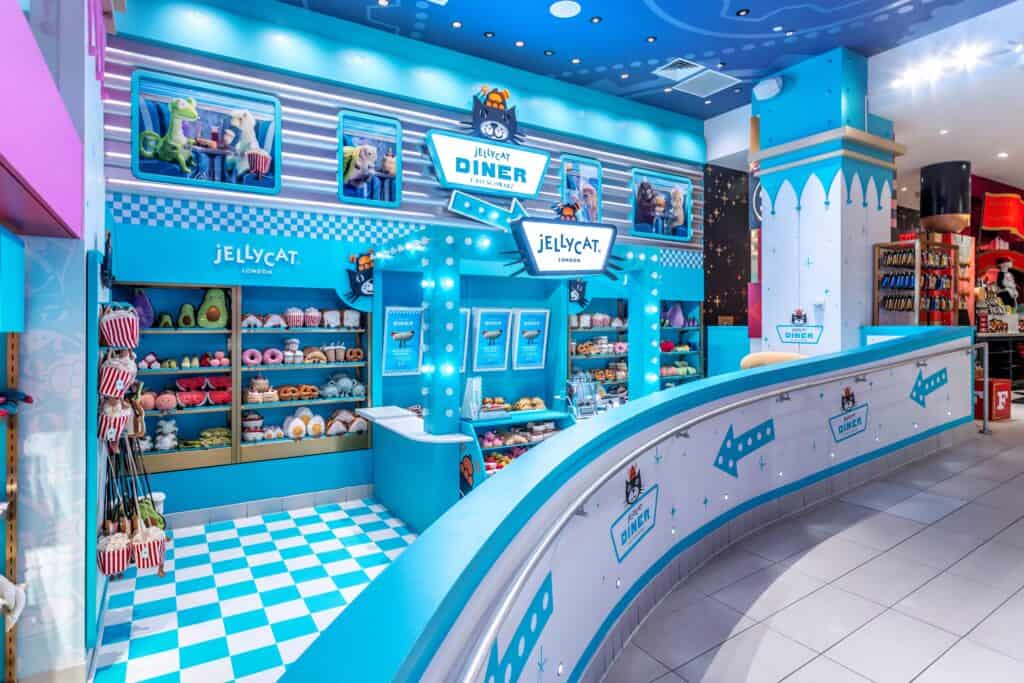Learn the 9 key benefits of pop-up branding for retail success
What’s more iconic than the Nike swoosh? A Nike pop-up shop. The most recent example of Nike pop-up branding at Nordstrom’s dedicated pop-up space, The Corner at 57th and Broadway reinforces the power of pop-up shops to bring people and brands together in unexpected ways. Working with Nike, our team of designers and installers bring Nike’s pop-ups to life, giving Dynamic a front-row seat to the power of experiential retail and personalized marketing.
Our latest project with Nike at Nordstrom’s New York flagship is bringing foot traffic, generating media buzz, and transforming The Corner into a community hub with running groups, stretching workshops, styling sessions, and even ice-bath appointments.
By creating a dedicated pop-up space at its NYC flagship store, Nordstrom is sending a strong signal to customers and brands that it’s time to do more than simply put products on store shelves. While pop-up branding and merchandising isn’t new, dedicating permanent space within such an iconic store reinforces the power of the format to do more than simply sell products. From visual merchandising and community building to product testing, customer outreach, and sales, the retail pop-up shop can do it all.
How Pop-Up Branding Impacts Retail Performance: Insights from Recent Research
As these statistics and research reinforce, pop-up branding has positive impacts on retail performance with retailers seeing increases in key metrics including foot traffic, sales uplift, social media engagement, earned media coverage, brand awareness, and more.
- 42% increase in nearby foot traffic for retail locations hosting fashion and apparel pop-ups
- 18% conversion rate for fashion pop-ups stores compared to 11% for permanent stores
- $95 billion in sales projected for the 2025 global pop-up retail market
- 63% boost to brand visibility and stronger customer relationships with pop-up branding and shops in the US
- 80% of retailers that opened a pop-up considered it successful and 58% plan to open another pop-up shop
- 51% increase in market visibility
- 46% increase in sales and social media engagement during a pop-up installation
- 150% increase in social media engagement for fashion and apparel brand-hosted pop-ups
- 29% increase in new customers after hosting a pop-up store
- 58% of shoppers who make a purchase at the pop-up then follow the brand online
(Top 20 Retail Pop-Up Fashion Store ROI Statistics 2025, Pop-Up Retail Statistics, Retail Pop-Up Must-Haves for 2025, Pop-Up Shop Guide 2025, Are Pop-Up Shops Genuinely Effective In Bolstering Sales?)

How Does Pop-Up Branding Differ from Traditional Retail Branding?
Pop-up branding for brick-and-mortar retail stores and brands emphasizes exclusivity, urgency, fear of missing out (FOMO), and the experiential and personal, while traditional retail branding is largely focused on building brand relationships and loyalty, consistency, and stability and reliability.
- Temporary vs. Permanent: pop-ups rely on a sense of urgency to create FOMO, driving excitement, curiosity, and buzz. No one wants to miss out on the latest and greatest—even if it’s coming from a brand they don’t normally support or know.
Glossier is an expert at hosting tightly time-limited pop-ups around the world—from the You Fleur Truck in New York City to the Glossier Lounge in London and Nordstrom’s holiday-themed activations. These temporary shops focus on exclusivity, product reveals, and in-person connection. - Experimental vs. Consistent: one of the best aspects of pop-up shops is the freedom you have to do whatever you want. You can choose a completely different visual merchandising strategy, test out experiential and immersive retail design, test new products, etc.
The 2019 Penguin Classics Pop-Up shop in London is a timeless example of doing more than selling product, with its immersive pop-up shop that doubled as a social hub, it featured readings, panel discussions, book clubs, and exclusive merchandise. - Flexibility vs. Focus: the transient and temporary nature of pop-up shops makes them ideal for product and market testing, hyper-local campaigns, hosted events, and culture-specific branding.
Before opening permanent stores, Warby Parker, tested its products and market with “Class Trip”, a traveling pop-up shop in a repurposed school bus. Warby Parker and its pop-up shop visitors were able to learn about each other—the brand, the glasses, and who and where is interested in buying them. - Media and Social Buzz vs. Reputation Management: pop-up branding is all about creating media and social buzz. Successful pop-up branding creates “Instagrammability” and earned media buzz with influencer partnerships, unexpected collaborations, and shareable visuals and moments.
The Period Shop by Kotex turned a topic most people would rather not talk about into a social media sensation. Along with selling merchandise, this weekend-long NYC pop-up was designed to de-stigmatize menstruation and create a safe place for people to connect. The pop-up attracted bloggers, influencers, health professionals, and celebrities, who shared their experiences on social media, helping to amplify the brand.

The 9 Key Benefits of Pop-Up Branding for Brick-and-Mortar Retailers
These 9 key benefits of pop-up branding for brick-and-mortar retailers underscore why the pop-up retail market has become an industry in its own right and is projected to earn $95 billion in 2025.
- Community Building and Collaboration: by creating a “third place” where commerce and community intersect—like a pop-up café in a department store or a women’s activewear brand at a major sporting event—people are encouraged to connect, linger, and slow-down.
These shared experiences build brand affinity, loyalty, and trust. Pop-ups also act as hubs for workshops, influencer meet-ups, product demos, and local partnerships, strengthening customer relationships and sparking collaboration between brands, communities, and customers.
The NYC Marathon pop-up festival is a prime example. It brings together runners, fans, brands, and local businesses in one shared space, turning race week into more than just a sporting event. By fostering collaboration and giving people a place to connect, these pop-ups amplify community spirit while deepening brand visibility and loyalty. - Multichannel Engagement: by bridging the gap between physical and digital channels, pop-ups give customers new ways to interact with a brand. Whether it’s scanning QR codes for exclusive online offers, sharing experiences on social media, or engaging with apps and livestreams tied to the event, pop-ups extend the brand relationship well beyond the temporary store helping build stronger, more lasting connections.
Nike, is a prime example of blending in-person product experiences with digital touchpoints. With mobile apps, personalized QR codes, and social content, Nike transforms short-term spaces into multichannel ecosystems that keep customers connected to the brand. - Launch and Test New Products and Features: pop-ups give brands a flexible way to prototype new ideas, gather consumer feedback, and test features in a real-world setting before committing to a full rollout.
Because they’re temporary and highly targeted, these activations let brands observe how customers interact with products, identify areas for improvement, and validate demand.
For example, IKEA uses pop-ups in major cities to trial new store concepts and showcase products in small, curated spaces before expanding them into a broader market. These pop-ups let the brand test everything from sustainable product lines to digital planning tools, while collecting immediate customer reactions. - Foot Traffic and Sales: one of the biggest benefits of pop-up shops is the ability to drive immediate customer traffic and boost sales. The temporary nature of these spaces sparks curiosity and draws people in, often attracting both loyal customers and new audiences.
For retailers, this means a surge in direct sales, greater brand visibility, and the opportunity to capture new customer relationships that extend beyond the pop-up itself. - Market Test Locations and Demographics: by setting up short-term spaces, you can see how different locations perform, identify which demographics are most engaged, and gather feedback that informs longer-term expansion strategies. These pop-up shops act as a testing ground, helping brands refine product mix, pricing, and positioning for specific markets.
Australian designer Christopher Esber did just this when he launched his first pop-up store in The Strand Arcade in Sydney. This pop-up branding strategy allowed him to showcase his Resort 2025 collection, test the customer response in Sydney’s premium retail location, and evaluate how a brick-and-mortar presence could support his brand. - Personalized Experiences: tailored interactions allow brands to make customers feel seen and valued, deepening emotional connection and loyalty. Customization services, styling advice, or interactive features that adapt to individual preferences—such as monograms, color choices, or curated product selections—are ideal pop-up branding tools.
By turning shopping into a one-on-one experience, brands create memorable moments that often lead to higher satisfaction and increased spending.
Sportswear brand Beyond Yoga launched its Club Beyond pop-up, designed to immerse visitors in a blend of fashion, wellness, and personalization. Shoppers could customize pieces from the brand’s popular Spacedye collection, while also enjoying add-ons like wellness classes, healthy snacks, and in-store beauty services. - Brand Awareness: pop-ups are one of the fastest ways to boost visibility and reach new audiences. Their temporary and often highly creative nature generates buzz, attracts media attention, and inspires social sharing—especially when the concept is bold or unexpected. By transforming a space into something memorable, you can expand your reach and leave a lasting impression well beyond the life of your pop-up.
Benefit Cosmetics did this when they partnered with Selfridges to launch Benemart, a supermarket-themed pop-up complete with pink décor, retro signage, and branded shopping baskets. The playful, highly Instagrammable concept drew steady foot traffic and extensive media coverage, turning everyday shopping into a shareable brand experience. - Flexibility and Cost-Effective: short leases, modular or pop-in/shop-within-a-store formats, and scaled-down operations mean much lower overheads while still gaining exposure.
The inherent pop-up shop flexibility means brands can adapt quickly: experimenting with different layouts, locations, or visual merchandising strategies without being locked in, helping them make smarter decisions for future, larger scale operations - Social and Media Buzz: few marketing and branding tactics generate as much instant attention as a well-executed pop-up. Their novelty and creativity make them immediately shareable, fueling organic social posts, influencer coverage, and press features. By designing experiences that are visually striking or tied to cultural moments, brands build visibility, credibility, and cultural relevance.
To mark its heritage and preview a new flagship, Onitsuka Tiger reimagined a historic Parisian building near the Champs-Élysées as Hôtel Onitsuka Tiger. Every detail of the pop-up was designed for spectacle: vibrant yellow accents, immersive themed rooms displaying archival footwear, a photography exhibition, and live artistic performances. The striking visuals and cultural programming made the space irresistible to visitors, influencers, and media alike.
Three Examples of Pop-Up Branding Success in Physical Retail
From fashion to lifestyle and every other vertical in-between, retailers are proving how pop-up branding delivers lasting impacts. Here are three pop-up examples that our team refers to when brainstorming new ideas:
- Uniqlo’s Furugi Project pop-up in Tokyo stands out as a fresh take on second hand fashion within a major global brand. Instead of simply reselling donated clothes, Uniqlo curated pre-worn pieces, remade others into one-of-a-kind designs, and offered them at accessible price points.
This approach blended sustainability with creativity, giving customers a unique mix of vintage appeal and modern affordability. By positioning the project as both a shopping destination and a testbed for circular retail, Uniqlo signaled a serious commitment to responsible fashion while creating a memorable, shareable experience for Tokyo shoppers. - Jellycat brought its playful charm to life with a series of food-themed pop-ups, including a fish-and-chips-inspired shop at Selfridges in London and the Jellycat Diner at FAO Schwarz in NYC. Both pop-ups leaned into bold, nostalgic styling with exclusive plush characters, clever packaging like newspaper-style gift bags, and plenty of photo-ready moments. The New York pop-up, designed and installed by Dynamic created an immersive brand experience that delighted shoppers and generated buzz across social media.

Jellycat FAO Schwartz pop-up by Dynamic
- For International Women’s Day 2024, skincare brand Aesop transformed three of its stores in Shanghai and Guangzhou into temporary “Women’s Libraries.” Shelves usually lined with creams and cleansers were instead filled with books by women and allies, spanning different genres and languages. Visitors could select a complimentary title and even collect a unique stamp from each store, turning the pop-up space into both a celebration of women’s voices and a cultural experience.
At Dynamic, we know what creates pop-up branding and retail success— and our clients’ results speak volumes.
At Dynamic, our unique combination of IN-HOUSE offerings makes us your single source provider for all your retail pop-up branding, design, and installation needs. No one understands retail installation better than we do.
Contact us to learn how we handle any aspect of your business—from an individual retail store to a global roll out. We are here for you.

